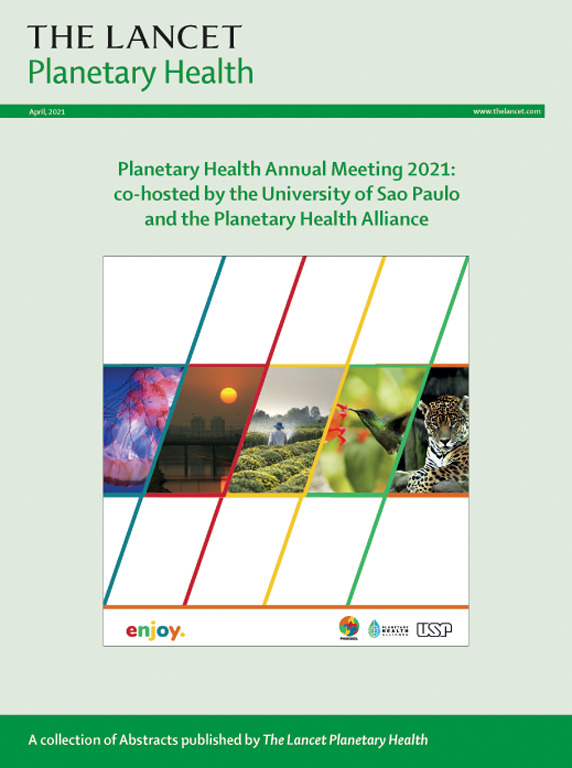Effect of alternative dosing strategies of pembrolizumab and nivolumab on health-care emissions in the Netherlands: a carbon footprint analysis
IF 21.6
1区 医学
Q1 ENVIRONMENTAL SCIENCES
引用次数: 0
Abstract
Background
Hospitals contribute substantially to greenhouse gas emissions and face a moral obligation to prioritise emission reduction. Drugs constitute an important component of the greenhouse gas emissions of hospitals. Alternative dosing strategies (ADS) have been implemented to improve the cost-effectiveness of pembrolizumab and nivolumab. However, the impact of these ADS on greenhouse gas emissions remains unknown. Therefore, we aimed to analyse the effect of ADS implementation on the carbon emissions of treatment with pembrolizumab and nivolumab.
Methods
We used a process-based lifecycle assessment to quantify the environmental impact of pembrolizumab and nivolumab, focused on equivalent carbon dioxide emissions (CO2e). Lifecycle inventory and impact data from Erasmus University Medical Center (Rotterdam, Netherlands) were used to calculate the CO2e for pembrolizumab and nivolumab, their dosing intervals, and the impact of ADS on CO2e. The functional unit of the study was the administration of a single dose of pembrolizumab or nivolumab.
Findings
In 2022, the annual carbon emissions related to pembrolizumab and nivolumab treatment in the Erasmus University Medical Center were 445 tons of CO2e, averaging 94 kg of CO2e per dose. Pharmaceutical production was the main driver of treatment-related carbon emissions (mean 92·9% of total emissions). Applying ADS resulted in 21–26% and 9–11% CO2e reductions for pembrolizumab and nivolumab, respectively.
Interpretation
This study shows the environmental impact of pembrolizumab and nivolumab treatment and calls for further implementation of ADS for pembrolizumab, nivolumab, and other anti-PD-(L)1 monoclonal antibodies, and more sustainable pharmaceutical production processes. Our findings create environmental awareness and contribute to the promotion and understanding of health-care practices with lower carbon emissions.
Funding
None.
pembrolizumab和nivolumab的替代剂量策略对荷兰医疗排放的影响:碳足迹分析
背景医院对温室气体排放贡献巨大,因此在道义上有义务优先减排。药物是医院温室气体排放的重要组成部分。为了提高 pembrolizumab 和 nivolumab 的成本效益,已经实施了替代剂量策略 (ADS)。然而,这些 ADS 对温室气体排放的影响仍然未知。因此,我们旨在分析 ADS 的实施对使用 pembrolizumab 和 nivolumab 治疗的碳排放的影响。方法我们使用基于流程的生命周期评估来量化 pembrolizumab 和 nivolumab 对环境的影响,重点是等量二氧化碳排放(CO2e)。我们利用伊拉斯谟大学医学中心(荷兰鹿特丹)提供的生命周期清单和影响数据,计算了pembrolizumab和nivolumab的二氧化碳当量、给药间隔以及ADS对二氧化碳当量的影响。研究结果2022年,伊拉斯谟大学医学中心每年与pembrolizumab和nivolumab治疗相关的碳排放量为445吨二氧化碳当量,平均每剂94千克二氧化碳当量。药品生产是治疗相关碳排放的主要驱动因素(平均占总排放量的 92-9%)。应用ADS后,pembrolizumab和nivolumab的二氧化碳排放量分别减少了21%-26%和9%-11%。 这项研究显示了pembrolizumab和nivolumab治疗对环境的影响,并呼吁对pembrolizumab、nivolumab和其他抗PD-(L)1单克隆抗体进一步实施ADS,并采用更具可持续性的制药生产工艺。我们的研究结果提高了人们的环保意识,有助于推广和了解碳排放量较低的医疗保健方法。
本文章由计算机程序翻译,如有差异,请以英文原文为准。
求助全文
约1分钟内获得全文
求助全文
来源期刊

Lancet Planetary Health
Multiple-
CiteScore
28.40
自引率
2.30%
发文量
272
审稿时长
8 weeks
期刊介绍:
The Lancet Planetary Health is a gold Open Access journal dedicated to investigating and addressing the multifaceted determinants of healthy human civilizations and their impact on natural systems. Positioned as a key player in sustainable development, the journal covers a broad, interdisciplinary scope, encompassing areas such as poverty, nutrition, gender equity, water and sanitation, energy, economic growth, industrialization, inequality, urbanization, human consumption and production, climate change, ocean health, land use, peace, and justice.
With a commitment to publishing high-quality research, comment, and correspondence, it aims to be the leading journal for sustainable development in the face of unprecedented dangers and threats.
 求助内容:
求助内容: 应助结果提醒方式:
应助结果提醒方式:


